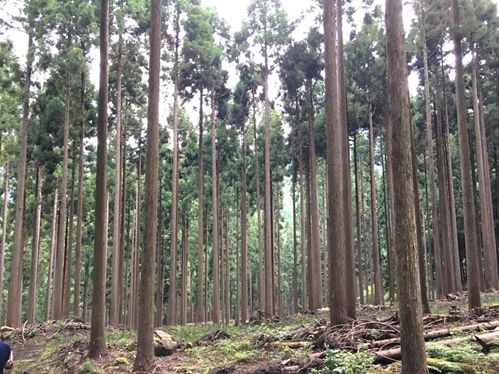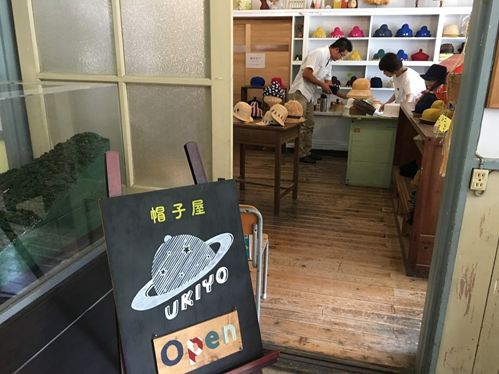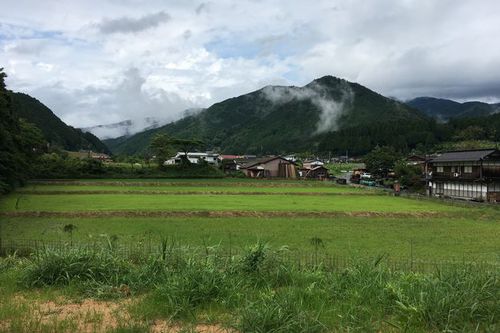October 21, 2017
Nishiawakura's Initiative Based on People Discovering Their Own Desires
Keywords: Civil Society / Local Issues Eco-business / Social Venture Newsletter Well-Being
JFS Newsletter No.181 (September 2017)
Nishiawakura is a "village" (Japanese "mura," essentially a rural district) located at the northeastern edge of Okayama Prefecture where it borders Hyogo and Tottori prefectures in Japan. The village covers 57.97 square kilometers and has a population of 1,490 (as of August 1, 2017). Through the center of the village flows the Yoshino River, with a long, narrow flat plain extending along it. About 95 percent of the village is forested, with Japanese cedar and cypress dominating. At the northern edge of the village, a wakasugi (young Japanese cedar) native forest, which is rare worldwide, reflects the splendid changing scenery of the four seasons.
In 2004, Nishiawakura decided against merging with neighboring municipalities, though that was a large-scale trend throughout Japan, from 1999 through 2010, but to remain an autonomous village. After that, in a joint effort involving both villagers and non-villagers, the village considered how to advance its efforts for autonomy. In 2008, it established the "Nishiawakura Village Initiative with a 100-year Vision of Forests." This initiative aims its sights on 50 years in the future.
Why does the name of this initiative include "100-year vision," though it focuses on 50 years in the future? Looking back on the past, 50 years ago there were also people who acted in consideration of the village's future. They planted trees, and the trees are 50 years old now. That is why the initiative's name includes "100-year vision," implying their wish to pass along the hopes of their ancestors to the future. Moreover, Nishiawakura hopes to develop not only forests but also the village itself and the local people.
In this issue, we introduce Nishiawakura's initiatives, including those based on their own desire to achieve what they want to do in the region.

Forest maintained under "Nishiawakura Village Initiative with a 100-year Vision of Forests"
Nishiawakura Local Venture School
When talking about regional revitalization, we sometimes describe people's personalities in terms of three behavioral principles: hunting type (based on ambition), nomadic type (based on curiosity), and agriculture type (based on desire for security). Nowadays, more and more hunting-type people are moving to Nishiawakura, with the number arriving exceeding 100 in total. Also, 13 start-up companies have been launched there, and the combined total of their annual sales amounts to slightly over 800 million yen (about US$7.2 million). To organize this trend and make it sustainable, the village began holding courses at the Nishiawakura Local Venture School (LVS) in 2015.
LVS courses are offered on the assumption that each school participant will start up a new business based in the village. Participants who pass the final selection are provided with training opportunities, a subsidy and other support.
In the first selection, carried out in Nishiawakura, participants can receive feedback directly from residents. Also, to make more concrete plans, each participant works in a team with village officers to solve problems quickly and visits sites suitable to his or her business. After a brush-up period, the final selection is carried out and those who pass it can start business.
One of the LVS's notable features is that everything depends on "the individual's own desire." Participants are repeatedly asked, "Is that really what you want?" Every time they are asked this, they adjust their business plans by looking back at themselves again. A sense of unity is generated not by starting with an action for the sake of the region or Japan or society, but by the process of awaking each participant's passion and having village residents experience this passion by means of the selections.

Hatter UKIYO, winner in Nishiawakura Local Venture School 2015
Nishiawakura Local Life Laboratory
A challenge to foster human resources step by step in the village has also been undertaken under a program called Nishiawakura Local Life Laboratory (LLL). In this program, agriculture-type people can develop themselves while learning about the village, unlike hunting-type people, who are involved in the village from the start as entrepreneurs.
Participants in this program seek their future while learning about the village as apprentices for one year. After the program is completed, the participants can choose their own future at their discretion. If they want to start a business, they can seek to create a business using the LVS. They can also find a job and continue living in the village. They can even choose to "graduate" and leave the village.
Eels from the Forest
Daisuke Maki, who has been actively playing a main role in implementing the LVS and LLL since their inception, conducts his own business activities in the village through his company, "A0 Co., Ltd." He runs an eel aquaculture farm in the former gymnasium of an abolished elementary school. His eels are sold under the name "Eels from the Forest." He tries to maximize the available natural capital by utilizing wood waste generated from lumber processing factories in the village as fuel for the heating system to keep temperatures optimal in his aquaculture farm. Since chemicals are used as little as possible to raise the fish, the eels produced by his culture method are safe to eat.
Maki also pays particular attention to managerial aspects: maximizing the value of each eel. In the conventional process, starting from production (aquaculture), processing, distribution and retail, and finally leading to consumers, the heads of eels are discarded during processing. Eel heads, however, are known to contain large amount of collagen, and his farm is now trying to find a way to make good use of them, as they would otherwise be treated as waste. To deliver tasty eels for consumers to enjoy, the farm is also particular about its freezing technology. Instead of using expensive techniques, the farm looked into developing a low-cost freezing technique, which it is using now.
Maki hopes that his eel culture business will play the role that cattle used to play in linking mountains and agricultural fields in the past. Wood waste generated from processing lumber harvested from the mountains is already used as fuel, and now he is attempting to grow grains and vegetables using nutrients generated from eel farming as fertilizer in farmlands. These are some of the creative ways to make the forest, which is the villagers' pride, indispensable to many people through business activities, instead of just preserving it as something to be appreciated like a museum.

Eels from the Forest
Activities for regional revitalization are gaining steam and many people are working hard to support those activities across Japan. On the other hand, burnout among these people is a possible issue. Planning a business based on one's true desires could be one solution to this issue. Having a venue to share one's own passion for one's business directly with people in the community could lead to a future co-created by "I" and the community.
Furthermore, in the modern era when we feel pressed for time, opportunities to get to know a community and re-examine oneself in an environment where people are loosely linked may be invaluable. Nishiawakura is a village, retaining the warmth to embrace not only people who want to take on new challenges but also people who still can't figure out what they want to do.
Written by Yuta Hashimoto
Related
"JFS Newsletter"
- 'Good Companies in Japan' (Article No.4): 'Eightfold Satisfaction' Management for Everyone's Happiness
- "Nai-Mono-Wa-Nai": Ama Town's Concept of Sufficiency and Message to the World
- 'Yumekaze' Wind Turbine Project Connects Metro Consumers and Regional Producers: Seikatsu Club Consumers' Co-operative
- Shaping Japan's Energy toward 2050 Participating in the Round Table for Studying Energy Situations
- 'Good Companies in Japan' (Article No.3): Seeking Ways to Develop Societal Contribution along with Core Businesses



